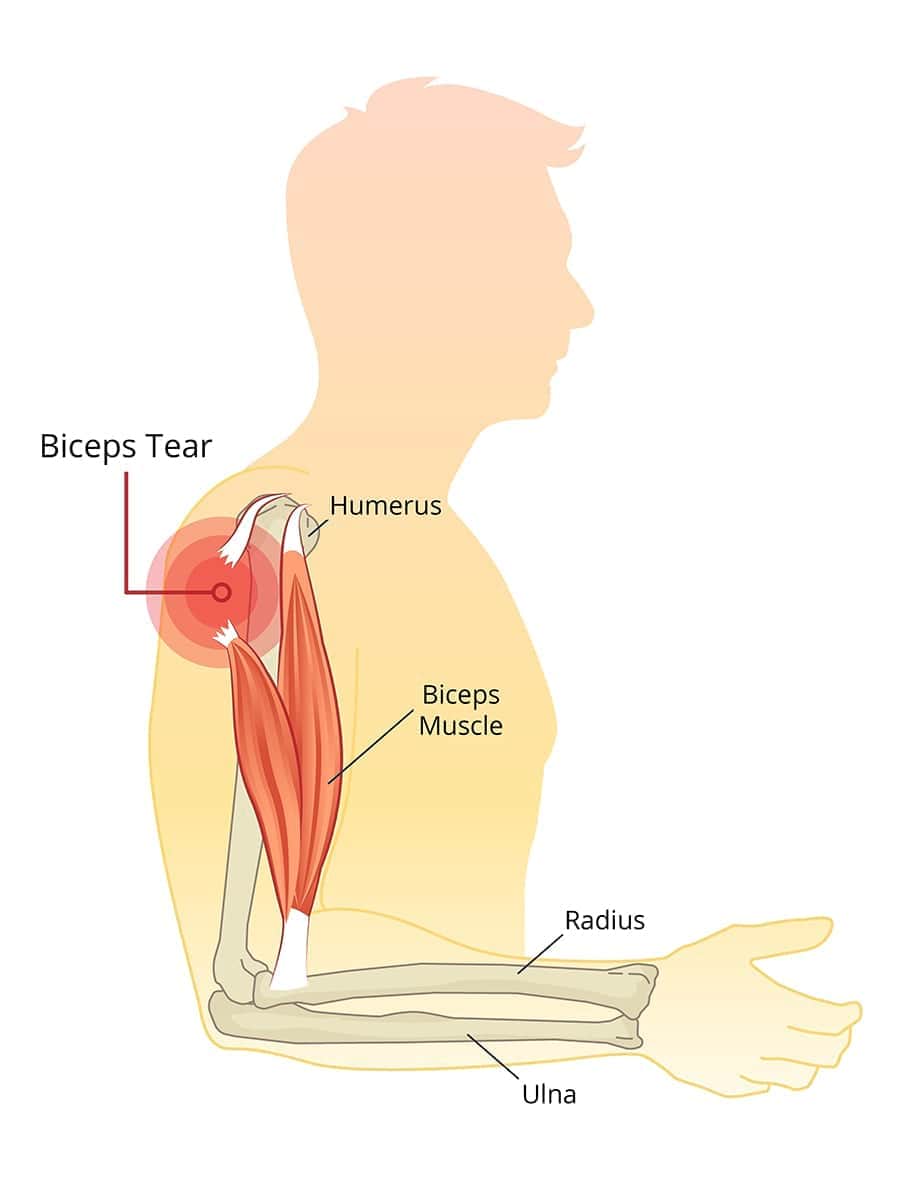Introduction
Tenodesis describes a procedure to anchor a tendon to a bone. It is commonly used to repair a biceps tear at the shoulder, most frequently affecting the long head biceps tendon.

Preoperative Instructions
- Existing medication(s) – some medications can impact surgery, especially any anti-coagulant medication and medicine for diabetes; we will advise if any of your medication needs to be stopped (and when) well ahead of the day of surgery. Any other medication should be taken the morning of surgery with a little water (half a cup maximum).
- You should not shave (or wax) skin near where any surgical incisions will be made.
- No solid foods (cow's milk and drinks containing cow's milk are considered food) should be consumed within 6 hours of surgery; clear fluids (e.g. water, cordial) may be consumed until 3 hours before surgery and then nil by mouth from that point.
- Please advise us if you have a cold or fever, a cough or any other injuries or infections (e.g. urinary tract infection or cuts/tears to the skin) – your procedure may need to be postponed as any of these may make anaesthesia or surgery unsafe
- Please bring all imaging (e.g. x-rays / CT scans / MRI scans) with you to hospital.
- Please come to hospital at least one hour before your planned surgery, unless we advise you otherwise.
In very general terms make sure you follow a healthy and balanced diet before surgery and continue any regular physical activity up until the day of the procedure. If you smoke, you should ideally stop smoking at least four weeks before the procedure and otherwise as a minimum at least one week before.
Procedure
A biceps tenodesis procedure is carried out under general anaesthetic. There are two approaches to surgical repair of the biceps tendon – one using only soft tissue and the other using hardware fixation (implants).
Soft tissue approaches involve either rolling up a section of the bicep muscle and attaching that to the bone in place of the tendon (using minimally invasive techniques) or effectively 'weaving' sutures together and tying the tendon to a shoulder ligament. Fixation methods include making a small hole in the humerus (upper arm bone), inserting an end of the tendon into it and screwing it in place or attaching a small 'button' to the tendon which is then positioned in a hole in the humerus.
Postoperative Instructions
After most biceps tenodesis procedures patients are able to return home the same day or the next day. Patients also receive a pain block which keeps the shoulder numb for 12-18 hours afterwards. A sling must be worn for the 4-6 week period after surgery. It is also important to avoid lifting anything heavier than a glass of water with the affected arm during this period.
Complete recovery can take up to a year, although most strength and range of motion returns by the 4-6 month mark if the exercise rehabilitation program is followed correctly (more details on the program will be given to you after surgery).
Risks
As with any surgery, with arthroscopic surgery there is always a risk of:
- Pain.
- Bleeding.
- Scarring.
- Infection (of the incision site, or in the chest).
- Blood clot (leg or lung).
- Stroke.
- Heart attack.
- Damage to nerves / blood vessels.
Specific risks of biceps tenodesis surgery include:
- Issues with attachment to the bone.
- Change in appearance of arm.
- Recurrence of injury to affected tendon or bones.

